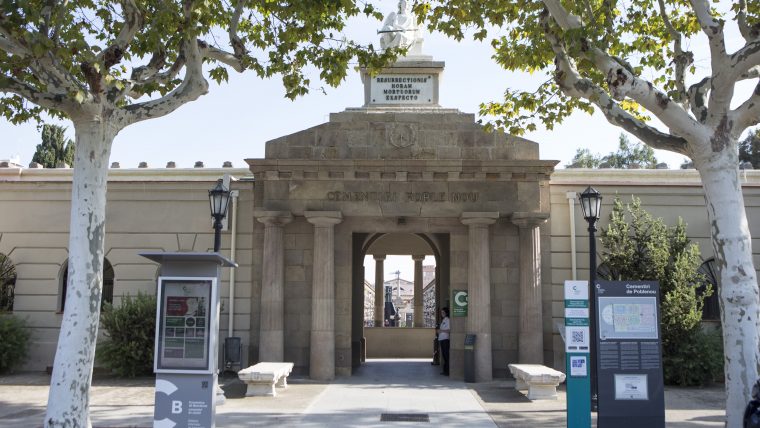
The Poblenou Cemetery, with two hundred years of history behind it, was the first to be built – twice – on the edge of the city. The current one was designed by the architect Antonio Ginesi and opened in 1819, following the destruction of the first one in the Peninsula War. Built in a Neoclassical style, the Poblenou Cemetery offers visitors a trip back to 19th-century Barcelona .
Walking between works of art
It is a veritable open-air museum: the monumental pantheons, the marble sculptures, the layout and the decoration of the site are the work of some of the best sculptors and architects of the I9th century.
The first part, which follows the design of the Italian architect Antonio Ginesi, has a Neoclassical style and is laid out symmetrically around two streets in the form of a cross, producing four blocks. A monument to the victims of the Yellow Fever epidemic in 1821 stands at the crossroads.
The cemetery of the powerful classes
In 1849 the architect Joan Nolla was commissioned to create a second part, exclusively for well-off families.Here members of the most powerful dynasties in Barcelona are buried and there are many valuable sculptures from the second half of the I9th century, in a Neoclassical, Modernista or eclectic style.




Cultural heritage
-
Sant Martí
el Poblenou
-
- Phone number
- Tel.: 934841999
-
- Web
- http://www.cbsa.cat Open in a new window
-
- E-mail
- cbsa@cbsa.cat
-
- Titularity
- Public center
- Address:
- Avinguda d'Icària, 204
- Districte:
- Sant Martí
- Neighborhood:
- el Poblenou
- City:
- Barcelona
Timetable
| Dies | Hores |
|---|---|
| De dilluns a diumenges i festius | de 08:00 h a 18:00 h |
- Sections of this equipment
- Cementiris de Barcelona Open in a new window
- Sections of this equipment
- Oficina d'atenció a la ciutadania de cementiris de barcelona Open in a new window
Esdeveniments
-
Festa Modernista 10è Aniversari de la Casa Museu Amatller Open in a new window
From 12/03/2025 to 22/11/2025
If you would like to make a correction related to this activity...
LET US KNOW

